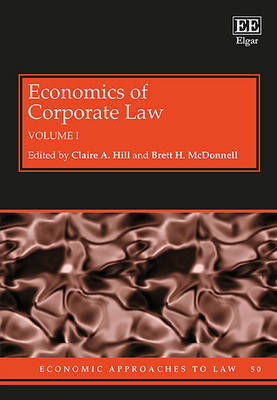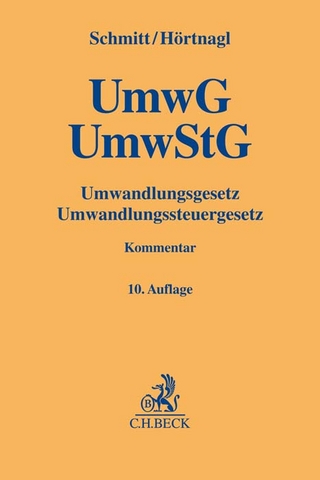
Economics of Corporate Law
Edward Elgar Publishing Ltd (Verlag)
978-1-78536-148-7 (ISBN)
Scholarly analysis of corporate law in the United States has come to be dominated by an economic approach. Professor Hill and Professor McDonnell here draw together seminal articles which represent major milestones along the road that economics has traveled in coming to play this central role in corporate law scholarship. The focus is on the analysis of corporate law, drawing mainly upon legal scholarship and particularly on US scholarship, which is the originator of the application of modern economic analysis to corporate law and has had much influence in other countries.Beginning with several of the key works on the economics of the firm which have most heavily influenced legal scholarship, the title explores the central legal role of the board of directors and state competition for corporate charters. It further considers the role of hostile takeovers and board defenses against them and the effectiveness of shareholder suits and other agency mechanisms.
31 articles, dating from 1931 to 2006
Contributors include: L.A. Bebchuk, A.A. Berle, Jr., B.S. Black, H. Hansmann, R. Kraakman, H. Manne, M.J. Roe, R. Romano, O. Williamson
Edited by Claire A. Hill, Professor and James L. Krusemark Chair in Law and Brett H. McDonnell, Professor and Dorsey & Whitney Chair in Law, University of Minnesota Law School, US
Contents:
Introduction
Claire A. Hill and Brett McDonnell
PART IECONOMICS OF THE FIRM
1. Ronald Coase (1937), ‘The Nature of the Firm’, Economica, 4, 386–405
2. Michael C. Jensen and William H. Meckling (1976), ‘Theory of the Firm: Managerial Behavior, Agency Costs and Ownership Structure’, Journal of Financial Economics, 3 (4), October, 305–60
3. Oliver Williamson (1984), ‘Corporate Governance’, Yale Law Journal, 93 (7), June, 1197–230
PART IITHE BOARD AND PURPOSE
4. A.A. Berle, Jr. (1931), ‘Corporate Powers as Powers in Trust’, Harvard Law Review, XLIV (7), May, 1049–74
5. E. Merrick Dodd, Jr. (1932), ‘For Whom are Corporate Managers Trustees?’, Harvard Law Review, XLV (7), May, 1145–63
6. Stephen M. Bainbridge (2003), ‘Director Primacy: The Means and Ends of Corporate Governance’, Northwestern University Law Review, 97 (2), 547–606
7. Margaret M. Blair and Lynn A. Stout (1999), ‘A Team Production Theory of Corporate Law’, Virginia Law Review, 85 (2), March, 247–328
8. Sanjai Bhagat and Bernard Black (1999), ‘The Uncertain Relationship Between Board Composition and Firm Performance’, Business Lawyer, 54 (3), May, 921–63
9. Donald C. Langevoort (2001), ‘The Human Nature of Corporate Boards: Law, Norms, and the Unintended Consequences of Independence and Accountability’, Georgetown Law Journal, 89, 797–832
PART IIISTATE COMPETITION
10. William L. Cary (1974), ‘Federalism and Corporate Law: Reflections Upon Delaware’, Yale Law Journal, 83 (4), March, 663–705
11. Ralph K. Winter, Jr. (1977), ‘State Law, Shareholder Protection, and the Theory of the Corporation’, Journal of Legal Studies, 6 (2), June, 251–92
12. Roberta Romano (1985), ‘Law as a Product: Some Pieces of the Incorporation Puzzle’, Journal of Law, Economics, and Organization, 1 (2), Fall, 225–83
13. Bernard S. Black (1990), ‘Is Corporate Law Trivial?: A Political and Economic Analysis’, Northwestern University Law Review, 84 (2), 542–97
14. Robert Daines (2001), ‘Does Delaware Law Improve Firm Value?’, Journal of Financial Economics, 62 (3), December, 525–58
15. Ehud Kamar (1998), ‘A Regulatory Competition Theory of Indeterminacy in Corporate Law’, Columbia Law Review, 98 (8), December, 1908–59
16. Mark J. Roe (2003), ‘Delaware’s Competition’, Harvard Law Review, 117 (2), December, 588–646
Volume II
An introduction to both volumes by the editors appears in Volume I
PART 1TAKEOVERS AND TAKEOVER DEFENCES
1. Henry G. Manne (1965), ‘Mergers and the Market for Corporate Control’, Journal of Political Economy, 73 (2), April, 110–20
2. Frank H. Easterbrook and Daniel R. Fischel (1981), ‘The Proper Role of a Target’s Management in Responding to a Tender Offer’, Harvard Law Review, 94 (6), April, 1161–204
3. Ronald J. Gilson and Reinier Kraakman (1989), ‘Delaware’s Intermediate Standard for Defensive Tactics: Is There Substance to Proportionality Review?’, Business Lawyer, 44 (2), February, 247–74
4. Jeffrey N. Gordon (1997), ‘”Just Say Never?” Poison Pills, Deadhand Pills, and Shareholder-Adopted Bylaws: An Essay for Warren Buffett’, Cardozo Law Review, 19 (1–2), September–November, 511–52
5. Lucian Arye Bebchuk, John C. Coates IV and Guhan Subramanian (2002), ‘The Powerful Antitakeover Force of Staggered Boards: Theory, Evidence, and Policy’, Stanford Law Review, 54 (5), May, 887–951
PART IISHAREHOLDER SUITS AND OTHER AGENCY MECHANISMS
6. Janet Cooper Alexander (1991), ‘Do the Merits Matter? A Study of Settlements in Securities Class Actions’, Stanford Law Review, 43 (3), February, 497–598
7. Melvin Aron Eisenberg (1993), ‘The Divergence of Standards of Conduct and Standards of Review in Corporate Law’, Fordham Law Review, 62 (3), 437–68
8. Edward B. Rock (1997), ‘Saints and Sinners: How Does Delaware Corporate Law Work?’, UCLA Law Review, 44, 1009–107
9. Bernard Black, Brian Cheffins and Michael Klausner (2006), ‘Outside Director Liability’, Stanford Law Review, 58 (4), February, 1055–159
10. Lucian Arye Bebchuk, Jesse M. Fried and David I. Walker (2002), ‘Managerial Power and Rent Extraction in the Design of Executive Compensation’, University of Chicago Law Review, 69, 751–846
11. John C. Coffee, Jr. (2002), ‘Understanding Enron: “It’s About the Gatekeepers, Stupid”’, Business Lawyer, 57 (4), August, 1403–420
12.Tom Baker and Sean J. Griffith (2006), ‘The Missing Monitor in Corporate Governance: The Directors’ and Officers’ Liability Insurer’, Georgetown Law Journal, 95, 1795–842
PART IIIOTHER PERSPECTIVES
13. Mark J. Roe (1991), ‘A Political Theory of American Corporate Finance’, Columbia Law Review, 91, 10–67
14. Henry Hansmann and Reinier Kraakman (2001), ‘The End of History for Corporate Law’, Georgetown Law Journal, 89 (2), June, 439–68
15. Henry Hansmann and Reinier Kraakman (2000), ‘The Essential Role of Organizational Law’, Yale Law Journal, 110 (3), December, 387–440
Index
| Erscheinungsdatum | 10.07.2016 |
|---|---|
| Reihe/Serie | Economic Approaches to Law series |
| Verlagsort | Cheltenham |
| Sprache | englisch |
| Maße | 169 x 244 mm |
| Themenwelt | Recht / Steuern ► EU / Internationales Recht |
| Recht / Steuern ► Steuern / Steuerrecht | |
| Recht / Steuern ► Wirtschaftsrecht ► Gesellschaftsrecht | |
| Wirtschaft ► Volkswirtschaftslehre | |
| ISBN-10 | 1-78536-148-1 / 1785361481 |
| ISBN-13 | 978-1-78536-148-7 / 9781785361487 |
| Zustand | Neuware |
| Haben Sie eine Frage zum Produkt? |
aus dem Bereich


